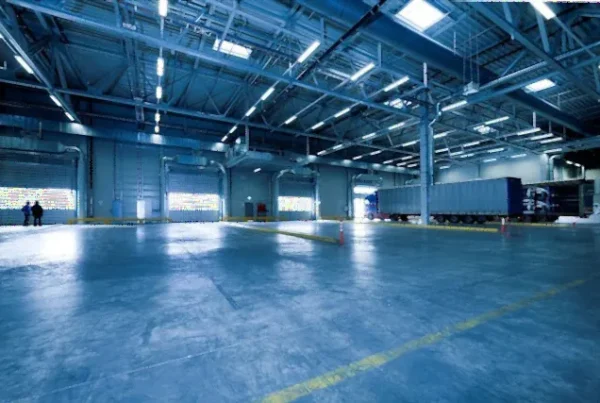How to Select a Cold Storage Contractor: A Decision Guide for Facility Owners
Selecting an industrial refrigeration contractor ranks among the most consequential decisions you’ll make for your cold storage or food processing facility. The contractor you choose determines not just whether your project completes on budget and schedule, but whether your refrigeration system delivers reliable, efficient performance for decades to come.
Unlike many construction decisions where mistakes can be corrected relatively easily, industrial refrigeration systems are deeply integrated into your facility. Poor contractor selection leads to compromised performance, excessive operating costs, safety concerns, and expensive corrective work that’s difficult to undertake while maintaining operations.
This guide provides facility owners, CFOs, and operations leaders with the critical criteria for evaluating contractors and making an informed decision that protects your investment.
Beyond the Bid: What Really Matters
Most facility owners evaluate contractors primarily on bid price and project timeline. While these factors matter, they pale in comparison to criteria that determine long-term success.
The Low-Bid Trap Consider two scenarios:
Scenario A: You select the lowest-bid contractor, saving $400,000 on a $3.5 million refrigeration system. Over the next 15 years, you spend:
- $850,000 in excess energy costs due to efficiency shortfalls
- $420,000 in premature component replacements
- $280,000 in emergency repairs and business interruption
- Countless hours troubleshooting poorly documented systems
Scenario B: You select a higher-bid contractor whose $3.9 million price includes superior equipment, comprehensive documentation, and long-term service support. The system operates reliably at design efficiency for 20+ years with predictable maintenance costs.
The facility owner in Scenario A “saved” $400,000 initially but spent $1.5 million more over 15 years. More importantly, they endured operational disruptions, product losses, and management distraction that defies financial quantification.
This pattern repeats constantly in industrial refrigeration. Understanding how to identify contractors who deliver true value—not just attractive bids—is essential.
Essential Contractor Qualifications
Technical Expertise and Specialization
Industrial refrigeration demands specialized engineering knowledge that differs fundamentally from commercial HVAC or standard mechanical contracting.
Look for:
RETA (Refrigerating Engineers & Technicians Association) Certified Personnel RETA certification demonstrates commitment to industrial refrigeration excellence. Key certifications include:
- CARO (Certified Assistant Refrigeration Operator)
- CRO (Certified Refrigeration Operator)
- CRE (Certified Industrial Refrigeration Operator—Executive Level)
Ask: “How many RETA-certified personnel will work on our project, and at what certification levels?”
IIAR (International Institute of Ammonia Refrigeration) Involvement For ammonia systems, IIAR expertise is essential. Evaluate:
- IIAR member company status
- Staff with IIAR-specific training credentials
- Involvement in IIAR technical committees or standards development
- Track record implementing IIAR 2, IIAR 6, and other relevant standards[1]
Engineering Capability True system design requires professional engineering:
- Licensed Professional Engineers (PEs) with industrial refrigeration experience
- In-house engineering team (not subcontracted design)
- Demonstrated load calculation and system modeling capability
- Experience with computational fluid dynamics for facility airflow
Request: “Provide resumes for the PE and lead engineers assigned to our project, highlighting comparable projects they’ve led.”
Ammonia vs. Multi-Refrigerant Experience Some contractors specialize in specific refrigerants while others maintain expertise across technologies. For large industrial facilities, ammonia-specific expertise typically delivers superior results due to the refrigerant’s dominance in this market sector.
If considering CO2 or other alternatives, verify the contractor has successful installations operating for 3+ years, not just recent forays into emerging technology.
Project Experience and Track Record
Past performance predicts future results. Dig deep into the contractor’s experience.
Size and Complexity Match A contractor successful with 20,000 square foot blast freezers may struggle with 200,000 square foot multi-temperature distribution centers. Conversely, major industrial firms may lack attention to detail on smaller specialty projects.
Evaluate:
- Projects of similar size to yours (within 50% of square footage/tonnage)
- Comparable temperature requirements (-40°F blast vs. +35°F cooler)
- Similar facility types (distribution vs. processing vs. cold storage)
Reference Projects Request 5-10 reference projects, then investigate thoroughly:
Contact facility managers and ask:
- “Does the system perform to the efficiency levels promised?”
- “What surprises or issues emerged during construction or early operation?”
- “How has system reliability compared to expectations?”
- “Would you hire this contractor again? What would you do differently?”
- “How was the contractor to work with when problems arose?”
The most revealing information comes from probing questions about challenges, not just confirmation of success.
Visit Operating Facilities Nothing substitutes for seeing installed systems in operation. Quality contractors gladly arrange facility visits where you can:
- Observe system operation under load
- Review machinery room organization and accessibility
- Examine documentation and control system interfaces
- Speak candidly with operating personnel about their experience
Pay attention to details: clean machinery rooms with well-organized piping, clear labeling, accessible valves, and comprehensive P&IDs (piping and instrumentation diagrams) signal contractor pride and competence[2].
Design Philosophy and Approach
How contractors approach system design reveals much about the value they’ll deliver.
Lifecycle Cost Focus Ask: “Walk me through how you balance initial capital cost against long-term operating expenses.”
Quality contractors discuss:
- Equipment efficiency specifications and expected energy consumption
- Maintenance accessibility and component longevity
- System documentation and operator training plans
- Expected system life and major component replacement cycles
Red flag: Contractors who focus exclusively on capital cost or meet only minimum specification requirements.
Redundancy and Reliability Industrial facilities cannot tolerate extended refrigeration failures. Robust designs include:
- Multiple compressors for partial redundancy and maintenance flexibility
- Emergency backup systems or procedures for critical applications
- Accessibility for maintenance without process interruption
- Controls that allow component servicing without system shutdown
Efficiency Beyond Equipment Selection System efficiency derives from thoughtful design, not just efficient components:
- Proper refrigerant piping sizing (minimizing pressure drop)
- Optimal evaporator placement and airflow design
- Condenser selection matched to climate and heat rejection capacity
- Control strategies that optimize part-load operation
Ask contractors to explain their efficiency optimization approach beyond equipment manufacturer specifications.
Safety Integration For ammonia systems, safety must be designed-in from the start:
- Machinery room ventilation and detection systems
- Secondary containment and leak mitigation
- Emergency isolation and response provisions
- Compliance with IIAR 2 and OSHA PSM requirements
Innovation and Technology Integration Modern industrial refrigeration incorporates sophisticated controls and monitoring:
- Advanced control algorithms for efficiency optimization
- Remote monitoring and diagnostic capabilities
- Integration with facility management systems
- Predictive maintenance and performance analytics
Evaluate whether contractors propose current technology or 10-year-old control approaches.
Documentation and Knowledge Transfer
Comprehensive documentation separates professional contractors from those simply installing equipment.
Essential Documentation Deliverables
Pre-Construction:
- Complete P&IDs showing all components, piping, and instrumentation
- Electrical schematics with control logic diagrams
- Load calculations and equipment selection criteria
- Sequence of operations for all operating modes
As-Built Documentation:
- Updated P&IDs reflecting field changes
- Equipment manuals and technical data
- Valve schedules with locations and specifications
- Refrigerant charge calculations and records
Operational Materials:
- Startup and shutdown procedures
- Maintenance schedules with detailed procedures
- Troubleshooting guides for common issues
- Safety procedures and emergency response plans[3]
Request documentation examples from past projects. Poor or incomplete documentation signals future operational challenges.
Training and Commissioning System commissioning and operator training determine whether your team can effectively operate and maintain the installation:
- Comprehensive startup and testing protocols
- Hands-on training for operating and maintenance staff
- Documentation of system performance baseline
- Written training materials for ongoing reference
Ongoing Support Quality contractors stand behind their work:
- Warranty terms (equipment and labor coverage, duration)
- Post-startup support availability
- Spare parts programs
- Service response commitments
Financial Strength and Project Management
Even excellent technical capabilities fail without sound business practices.
Financial Stability Industrial refrigeration projects involve substantial capital and extended timelines. Contractor financial problems create project risk:
- Verify bonding capacity appropriate to project size
- Request bank and supplier references
- Review litigation history (mechanic’s liens signal problems)
Project Management Capability
- Dedicated project manager with clear authority
- Regular reporting and communication protocols
- Subcontractor management approach
- Change order processes and documentation
Safety Record Request:
- OSHA 300 logs (injury and illness records)
- EMR (Experience Modification Rate) for workers’ compensation
- Safety policies and field implementation approaches
Strong safety performance indicates professional operation and reduces project liability risk.
The Selection Process: A Practical Approach
Phase 1: Pre-Qualification (reduce field to 3-5 contractors)
- Review company qualifications and experience
- Verify licensing, insurance, and bonding
- Conduct initial facility visits or reference calls
- Assess cultural fit and communication style
Phase 2: Detailed Evaluation (down-select to 2-3)
- Issue detailed RFP with complete specifications
- Conduct reference checks and facility visits
- Review technical approach and design philosophy
- Evaluate proposed team credentials
Phase 3: Final Selection
- In-depth proposal reviews
- Clarification meetings for technical questions
- Lifecycle cost analysis comparing proposals
- Final reference verification
- Negotiation of final terms and conditions
Price as One Factor Among Many When proposals are properly specified and evaluated, price differences reflect real value variations. A mid-range bid from a highly qualified contractor typically delivers superior value compared to low bids from less capable firms.
Consider price in context:
- Price difference as percentage of total project cost
- Implications for energy efficiency and operating costs
- Risk mitigation value of superior experience and capabilities
A 15% price premium that delivers 10-15% ongoing energy savings pays for itself within 3-5 years, then provides value for 20+ years.
Red Flags: When to Walk Away
Certain contractor characteristics signal problems ahead:
- Reluctance to provide references or allow facility visits
- No RETA-certified or IIAR-trained personnel on staff
- Exclusively bottom-price market positioning
- Unable to articulate design philosophy beyond meeting minimum specs
- Poor or incomplete documentation examples
- No in-house engineering capability
- Primarily residential or commercial HVAC background
- High staff turnover or project manager changes
- Evasive responses to safety or quality questions
Trust your judgment. Contractors who generate concerns during selection will generate problems during execution.
The IRPros Difference
At Industrial Refrigeration Pros, we’ve built our reputation on the principles outlined in this guide:
Technical Excellence
- RETA-certified operators and IIAR-trained specialists
- Licensed Professional Engineers with industrial refrigeration expertise
- Proven experience across facility types, sizes, and refrigerant technologies
Lifecycle Value Focus
- System designs that optimize total cost of ownership
- Energy modeling and efficiency verification
- Comprehensive documentation for ongoing operational success
Client Partnership
- Transparent communication throughout project lifecycle
- Knowledge transfer that empowers your operational team
- Long-term service relationships that protect your investment
We compete on value, not price. Our clients choose IRPros because they understand that the contractor decision impacts their facility for decades, and short-term savings often represent long-term risk.
Planning a new cold storage facility or major refrigeration system upgrade? Contact Industrial Refrigeration Pros for an initial consultation. We’ll help you understand your options, develop a comprehensive requirements document, and—whether you ultimately select IRPros or another qualified contractor—ensure you make an informed decision that serves your business for years to come.
References
[1] International Institute of Ammonia Refrigeration (IIAR). (2024). IIAR 2: American National Standard for Safe Design of Closed-Circuit Ammonia Refrigeration Systems. IIAR Standards.
[2] ASHRAE. (2023). ASHRAE Guideline 3: Reducing Emission of Halogenated Refrigerants from Refrigerating and Air-Conditioning Equipment and Systems. American Society of Heating, Refrigerating and Air-Conditioning Engineers.
[3] International Institute of Ammonia Refrigeration. (2024). IIAR 6: Standard for Inspection, Testing, and Maintenance of Closed-Circuit Ammonia Refrigeration Systems.



